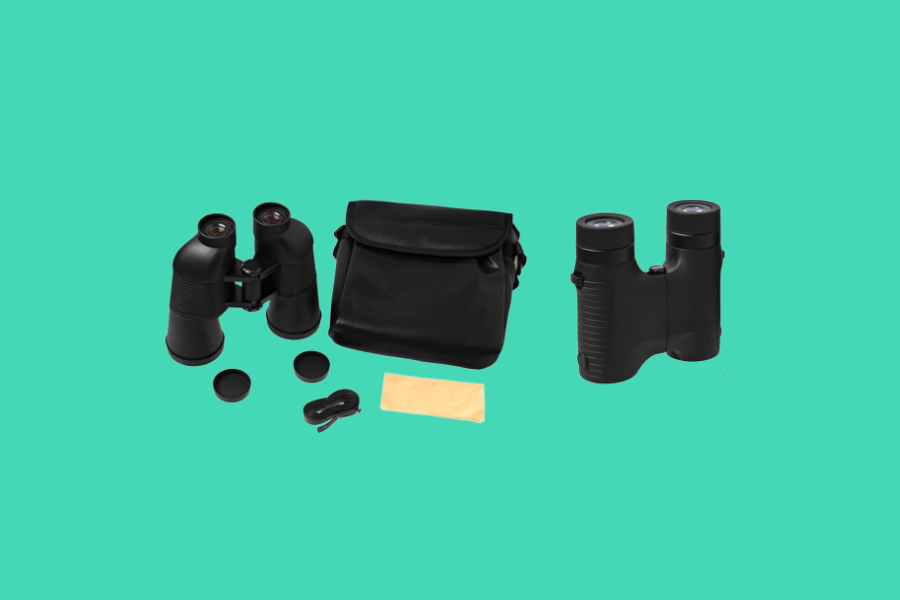
It is not uncommon to see a pair of binoculars after a while for clean that has suffered from the overzealousness of its owner. Improper cleaning of binoculars is a common cause of lens damage and this results in a hefty repair bill, or the need to simply replace the instrument.
In this article, we give you practical advice on how to clean binoculars properly. You’ll also learn the main principles and the procedure on how to maintain your binoculars without risk of damage.
The 2 Main Principles
To learn how to clean your binoculars without facing difficulty, you must follow these two principles…
Principle 1: Clean Only If Necessary
Cleaning the lenses, even with care, always involves the risk of scratches and wear of the ultra-thin coating layers that cover them. Binoculars and other optic instruments should therefore only be cleaned if necessary if the lenses are too dirty to allow proper use.
Principle 2: First Eliminate Dust and Particles
Certain dust, in particular, those of quartz which are very abundant in the environment (quartz is a basic component of very many rocks; sand for example is largely composed of quartz) are harder than glass and cause scratches and wear when the lenses are rubbed without having eliminated them. Scratches on the objective lenses do not interfere with the use of binoculars or spotting scopes, but on the eyepieces, it is much more annoying.
5 Steps on How to Clean Binoculars
Before starting clean binoculars, you must have cleaning accessories. The cleaning kit includes all the elements necessary for safe and effective cleaning (content and presentation may vary depending on availability).
Step 1
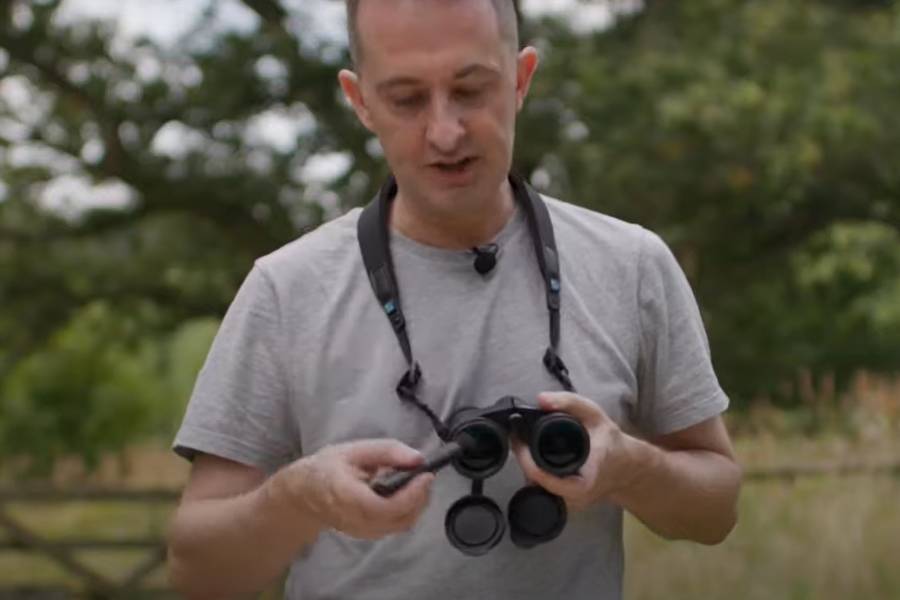
Start by cleaning the body of the instrument, the eyecups, etc… and eliminate as much dust and dirt as possible. You can do this with a damp cloth or a soft cloth dampened with a hint of household detergent. Avoid touching the lenses. Finish with plain water.
Step 2
Thoroughly remove all dust from and around the eyepiece and objective lenses. For this, you can blow air with your mouth or, better, use special bellows for cleaning optical instruments. If some dust remains attached, use a soft brush that will unhook it, without ever rubbing. You will then eliminate them by blowing.
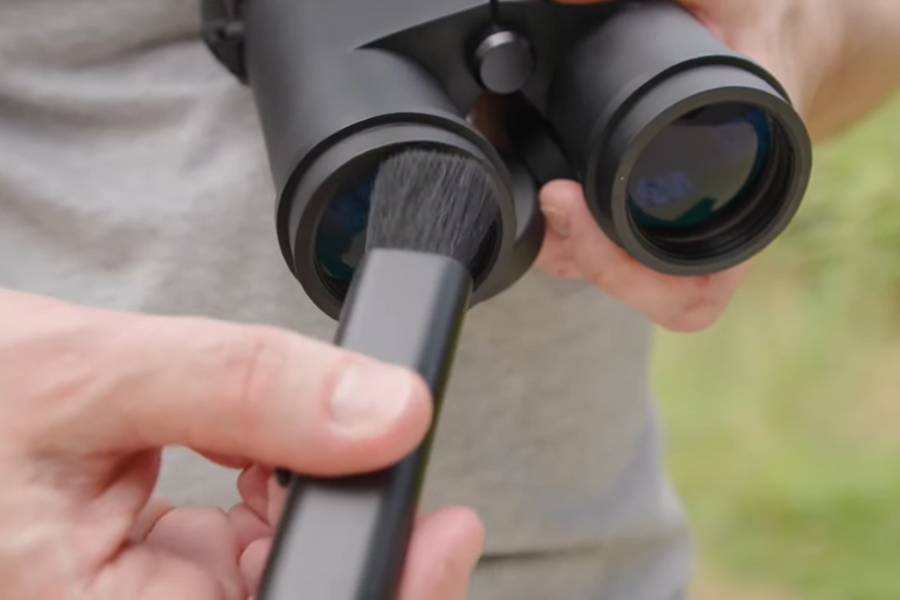
In the event of a disaster, if the binoculars have fallen in the sand for example, if they are covered in mud, touch them as little as possible at the level of the lenses.
If it is a waterproof model, do not hesitate to rinse them thoroughly by running them under the tap; all the particles must have disappeared before moving on to the next step. If it is a non-waterproof model or a non-tropicalized photo lens, let it dry well then blow until the particles are completely eliminated. Never rub.
Step 3
If there are no greasy traces on the lenses, a light mist deposited with the mouth, followed by the use of a special non-abrasive dry wipe for optical cleaning, will effectively clean them. If you don’t have a wipe, all you have to do is use your handkerchief, making sure it’s dust-free.
Beware of paper tissues or household papers which contain potentially abrasive fillers for the lenses and their coating layers, or which can deposit lint. If it’s hot, your breath won’t condense on the lenses, so you’ll need to use a cleaner, as described in step 4.
Step 4
If there are greasy traces that cannot be easily removed, use a mild cleaning product in small quantities, never a solvent. Optical instrument cleaning kits always contain it. Place a very light jet on a wipe and rub without pressing until the traces disappear.
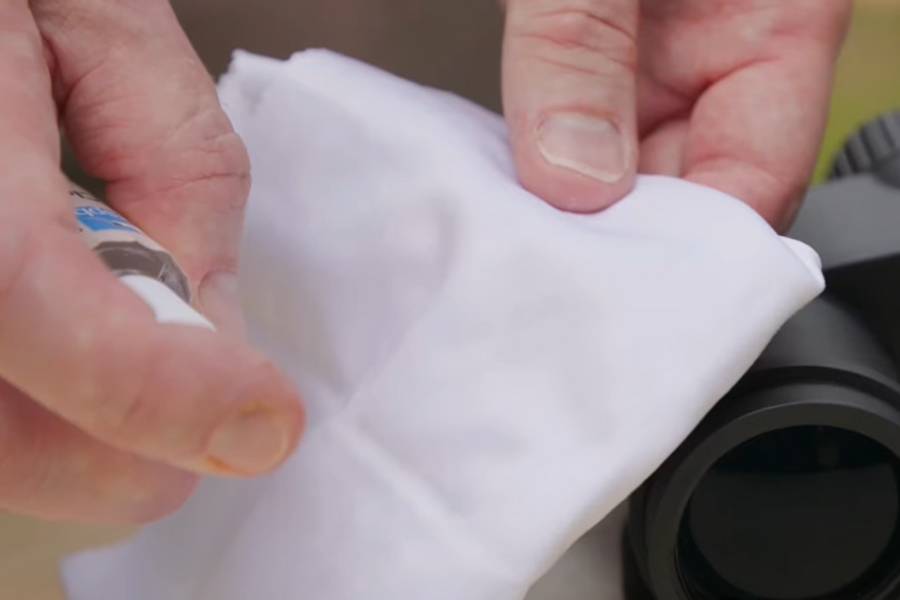
Do not spray directly on the lenses: the amount of liquid would be excessive. To remove streaks from the edge of the lenses, use cotton-tipped cleaning sticks lightly sprayed with cleaner. You can then finish steaming.
Step 5
Comes the finish. With a special antistatic cloth for optical cleaning and checking that dust has not reappeared on the lenses, finish the job. Lastly, only use special cloth. Because if it were to be loaded with grease, it would redeposit it the next time you clean it and would therefore be good for the trash.
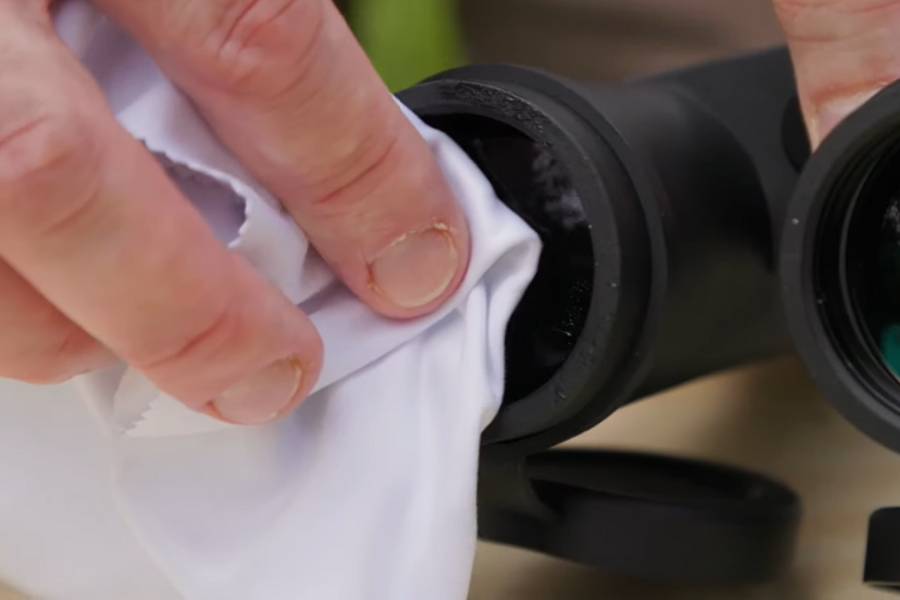
It is better to start cleaning with a disposable wipe and finish it with a special cloth that is reusable. This linen must be kept away from dirt and dust.
Let’s see the complete video on how to clean the lenses of your binoculars…
Conclusion
There is nothing more stressful or disappointing than noticing after cleaning the optics of your pair of binoculars, that the lenses have been scratched or degraded, especially if these models are expensive.
Now you know how to maintain your pair of binoculars. Even if your binoculars are waterproof, remember to spray them regularly with fresh water to remove sea salt and other materials that are harmful to the longevity of your binoculars (especially the rubbers of the eye cups!).
Frequently Asked Questions (FAQs):
How to clean smudges and fingerprints from binocular lenses?
Dampen a lens cleaning tissue or a microfiber cloth with a small amount of lens cleaning solution. Gently wipe the lens surface in a circular motion, starting from the center and moving towards the edges. Avoid applying excessive pressure.
Can I use water to clean my binocular lenses?
It’s generally not recommended to use water alone, as it may contain impurities that can harm lens coatings. If water is necessary, use distilled water and apply it sparingly. Always follow up with a proper lens cleaning solution for the best results.
Is it safe to disassemble my binoculars for cleaning?
Disassembling binoculars is not recommended for routine cleaning. If you have concerns about internal dust or dirt, it’s advisable to consult the manufacturer or a professional service for proper maintenance.
How often should I clean my binoculars?
The frequency of cleaning depends on usage and environmental conditions. Regularly inspect your binoculars, and clean the lenses whenever you notice dirt or smudges. For heavy use in challenging conditions, more frequent cleaning may be necessary.
Can I store my binoculars with lens caps on to prevent dust accumulation?
Yes, using lens caps when storing your binoculars can help prevent dust and debris from settling on the lenses. However, it’s still essential to clean the lenses regularly to maintain optimal clarity.
What should I do if my binoculars get wet?
If your binoculars get wet, dry them immediately using a soft, absorbent cloth. Ensure that no moisture remains on the lenses, and allow the binoculars to air dry completely before storing them in a protective case.